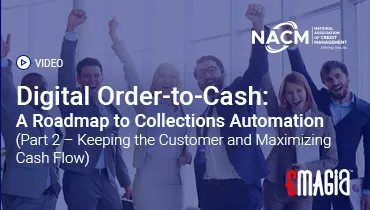The quote-to-cash process is the backbone of revenue operations, transforming a sales opportunity into cash in the bank. In this guide, you’ll discover how the Quote to Cash (QTC or Q2C) cycle works, how to optimize each stage—quote generation, configure price quote (CPQ), contract lifecycle management (CLM), order management, billing automation, revenue recognition automation, and more—and how to use quote-to-cash automation and AI-powered quote-to-cash tools to drive sales-to-cash optimization, digital contract management, omnichannel sales integration, and real-time sales analytics.
What Is the Quote-to-Cash Process?
The term “quote-to-cash” refers to the full end-to-end sales process from providing a quote to a customer all the way to revenue recognition and cash collection. It incorporates offers, pricing, contracts, order fulfillment, billing, payment processing, and analysis. The Q2C process connects sales, legal, operations, and finance functions into one seamless workflow.
Why Quote-to-Cash Matters in Modern Business
An optimized QTC process ensures faster sales cycles, fewer errors, better customer experience, improved cash flow, reduced revenue leakage, and stronger analytics. Companies achieving seamless quote-to-cash workflows are more competitive in digital sales transformation.
Core Stages of the Quote-to-Cash Process
While variations exist by industry, most quote-to-cash frameworks contain these key stages:
Offer Configuration / Configuration
At the start, sales or product teams configure the right solution — selecting features, modules, packages, or service tiers. This stage must handle complex rules, permutations, and constraints. CPQ systems (Configure Price Quote) often help here.
Pricing & Discounting
In this step, rules, margin thresholds, permissibility of discounts, promotions, and bundled pricing are applied. Pricing optimization is critical so that deals close quickly while preserving margin.
Quote Creation & Proposal Generation
A formal quote (or sales proposal) is generated, often with lines, terms, options, and approval paths (quote approval workflow). It’s shared with the customer for review. The quality and promptness of this step often influence win rates.
Negotiation & Contract Lifecycle Management (CLM)
The customer negotiates terms (payment, deliverables, warranties). Once agreed, documents move into contract creation, redlining, workflow approval, and signature. Digital contract management and CLM systems streamline this.
Order Management & Fulfillment
After contractual agreement, the order is processed. This may include availability checks, scheduling, provisioning, logistics, or service activation. Order management is central to QTC integration.
Billing & Invoicing
Once the order is fulfilled or the service delivered, an invoice is generated using invoicing solutions or billing automation. It must reflect all agreed terms, including discounts, taxes, and payment terms.
Payment Processing & Collections
This step covers payment capture, credit card/ACH/bank transfers, and collections for overdue invoices. Payment gateways and collections modules help manage this efficiently.
Revenue Recognition & Accounting Integration
After cash is received (or performance obligations met), revenue recognition automation ensures proper accounting entry per prevailing standards (ASC 606 / IFRS 15). Integration with ERP systems supports this.
Reporting, Analytics & Continuous Optimization
In the final phase, organizations analyze the full QTC flow using real-time sales analytics, dashboards, revenue cycle management metrics, and feedback loops to refine the process.
Advanced Topics & Optimization in Quote-to-Cash
Quote-to-Cash Automation & Workflow Automation QTC
Automation helps reduce manual handoffs in pricing, approvals, contract drafting, billing, and collections. Workflow automation ensures routing, alerts, escalations, and compliance.
AI-Powered Quote-to-Cash & Predictive Insights
AI in quote-to-cash enables predictive discounting, anomaly detection, intelligent upsell suggestions, and improved approval paths.
Pricing Optimization & Dynamic Pricing Strategies
Dynamic pricing models adjust in real time based on demand, competition, margin, and customer segmentation. Advanced QTC suites often include pricing engines.
Subscription & Recurring Billing Use Cases
For subscription and SaaS businesses, quote-to-cash must support recurring billing, renewals, upgrades/downgrades, proration, and usage-based billing.
Omnichannel Sales & Integration Across Touchpoints
Modern sales cycles may span web portals, field sellers, marketplaces, and eCommerce. QTC systems must integrate omnichannel data and maintain consistent quoting and contracting logic.
ERP Integration & System Architecture for QTC
Central to success is integrating QTC systems with CRM, ERP, financial ledgers, inventory, and service platforms. Data alignment and architecture are critical.
Security, Compliance & Auditability in QTC
Protecting contract, pricing, customer, and payment data is essential. Audit trails, role-based access, encryption, and compliance (GDPR, PCI, SOX) need emphasis.
How Emagia Enables Smarter Quote-to-Cash Transformation
Emagia supports a unified insights layer for financial operations that bridges sales quoting, contract, billing, and cash processes. With capabilities like anomaly detection, exception handling, and analytics, Emagia ensures the Q2C cycle is efficient, scalable, and transparent.
Emagia’s platform integrates with CPQ, CRM, ERP, and billing systems, providing real-time dashboards, root-cause visibility, and adaptive workflows. This means fewer manual adjustments, reduced revenue leakage, and faster cycle times from quote generation to cash.
By applying AI models to detect mismatches between quotes and invoices, Emagia helps maintain data integrity and reduce disputes. Its governance frameworks ensure that contract terms, pricing rules, and approvals remain enforced end-to-end.
Challenges & Pitfalls in Quote-to-Cash Implementation
Siloed Departments & Lack of Ownership
Often sales, legal, operations and finance hold parts of the process but lack shared accountability. This fragmentation undermines seamless flow.
Legacy Systems & Disconnected Tools
Many organizations use disparate systems that don’t communicate. Manual handoffs lead to errors and delays.
Complex Product / Service Offerings
Highly configurable products, bundling, tiers, add-ons, and promotions challenge quoting and pricing logic.
Contract Negotiation Delays & Versioning Issues
Multiple rounds of edits, redlines, and version confusion slow down the contracting stage.
Revenue Recognition Complexity & Compliance Risk
If recognition rules (e.g. performance obligations, deferred revenue) aren’t automated, companies risk noncompliance and audit issues.
Cash Collection & Dispute Handling
Late payments, billing disputes, credit holds, or wrong invoices disrupt cash flow. Collections must be proactive.
Change Management & Adoption Resistance
Process changes strike resistance, especially in teams reliant on spreadsheets and manual tasks. Training and governance are essential.
Metrics, KPIs & Benchmarking for Quote-to-Cash
Quote Cycle Time
Time from request to delivered quote. Shorter times usually improve conversion rates.
Quote-to-Order Conversion Rate
Percentage of quotes accepted and turned into orders. Indicates effectiveness of quoting and pricing.
Order Fulfillment Time
Time between contract acceptance and delivery.
Days Sales Outstanding (DSO)
Average time to collect payment after invoice is issued. Lower DSO indicates strong collections.
Invoice Accuracy Rate & Dispute Rate
Percentage of invoices without errors. A high dispute rate suggests problems earlier in quote or contract.
Revenue Leakage & Yield
Amount of revenue lost due to errors, discounts, unbilled services, or system mismatches.
Sales Cycle Duration
Time from initial quote request to contract signature.
Renewal / Upsell Rates
For subscription models, ability to retain or upsell under the same QTC framework.
Customer Satisfaction & Time-to-Value
Measuring customer experience around quoting, contract cycles, billing, and issue resolution.
Case Studies & Real-World Examples
SaaS Company: Enhancing QTC for Recurring Billing
(Insert a detailed example of how a SaaS vendor reengineered its quote-to-cash process, improved renewals, reduced recognition errors, and sped up cash inflows.)
Manufacturing Firm: Complex Configurations & CPQ + QTC Integration
(Example of a manufacturing business with product variants, bundles, volume pricing, and how integrating CPQ into QTC optimized quoting & margins.)
Telecom / Subscription Services: Omnichannel QTC Model
(How telco operators unified quoting across web, retail, field, and unified billing via QTC automation.)
Lessons Learned & Best Practices from Implementations
(Summaries of what worked, what failed, and guiding principles from multiple QTC transformations.)
Future Trends & Innovations in Quote-to-Cash
Autonomous Quote-to-Cash Flows
With AI, rules engines, and predictive orchestration, future systems may auto-configure quotes, route approvals, generate contracts, and trigger billing without human hands.
Blockchain & Smart Contracts in QTC
Smart contracts can self-execute terms when conditions met, reducing negotiation cycles, disputes, or delays.
Edge & IoT Integration in QTC for Physical Products
Devices may autonomously trigger quotes and orders (e.g. replenishment), integrating into QTC flows in real time.
Hyper-Personalization & Dynamic Bundling
AI and predictive analytics may drive personalized bundling and pricing in real time based on customer profile and behavior.
Continuous Revenue Management & Subscription Evolution
In subscription economies, QTC must evolve into renewal-to-cash, usage billing, upgrade/downgrade management, and retention analytics.
Integration with Commerce, CX & Marketing Systems
QTC will further connect with eCommerce, loyalty, marketing automation, and customer experience tools to deliver end-to-end revenue engagement.
Conclusion & Recommendations
The quote-to-cash process is a vital revenue engine. When optimized, automated, and closely governed, it reduces friction, accelerates deals, improves cash flow, and elevates customer trust.
To succeed, begin with mapping your current flow, prioritize bottlenecks, pilot CPQ and CLM integration, invest in analytics, and continuously refine using metrics. Embrace a unified architecture rather than siloed tools.
Frequently Asked Questions (FAQs)
What is the difference between quote-to-cash and order-to-cash?
Quote-to-cash includes the quoting, pricing, and contracting stages before order placement, while order-to-cash starts after the order is accepted and covers fulfillment, invoicing, and collection.
Why is CPQ part of the QTC process?
CPQ (Configure Price Quote) is the stage where the quote is assembled with product configuration, pricing rules, discounts, and approvals — a core input to the quote-to-cash flow.
How does automation improve the quote-to-cash process?
Automation speeds quote delivery, approval routing, contract generation, billing, payment processing, and analytics — reducing errors, delays, and manual effort.
What metrics should we track in quote-to-cash?
Key KPIs include quote cycle time, conversion rate, DSO, invoice accuracy, revenue leakage, sales cycle length, and renewal rates.
Can small businesses benefit from quote-to-cash solutions?
Yes. Even smaller sales operations can adopt modular QTC tools or CPQ systems to standardize quoting, reduce errors, and improve cash flow.



